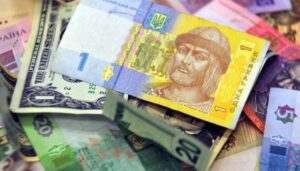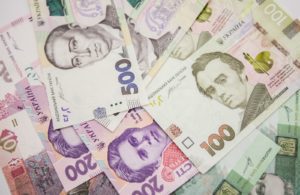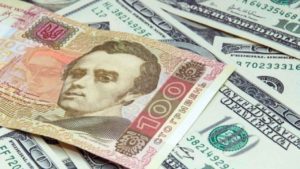
Analysts at Bank of America (BofA) Global Research do not expect further nominal strengthening of the hryvnia, according to a June 14 BofA study.
The bank said that it is still constructive in relation to the International Monetary Fund (IMF), but the bank does not expect further nominal strengthening of the hryvnia, especially given the seasonality of the exchange rate in the third quarter, BofA said.
The hryvnia to U.S. dollar exchange rate in the interbank foreign exchange market on July 31 strengthened to UAH 24.9845/$1 from UAH 25.0919/$1. The deputy chairman of the board of First Investment Bank, Vladyslav Kravets, told Interfax-Ukraine that the exchange rate in the interbank market on July 31 started with UAH 24.95-24.98/$1, and by the middle of trading it was UAH 25.075-25.115 per $1.
According to him, the steady trend to the hryvnia exchange rate strengthening due to the growth of non-residents’ investments in hryvnia-denominated government domestic loan bonds will continue in the near future.
“The seasonal growth in foreign currency earnings from agricultural exports has not gone beyond the figures that were last year or the year before, therefore the main driver for the current strengthening of the hryvnia exchange rate is the inflow of foreign investment in hryvnia-denominated government bonds. In the near future, the hryvnia exchange rate will continue to strengthen. The expected mitigation of the monetary policy of the Federal Reserve System and the European Central Bank, in response to a slowdown in economic growth, will stimulate the flow of investor funds to emerging markets, including Ukraine. If the NBU does not actively absorb the surplus of currency from the market to reserves, the hryvnia exchange rate will soon aim at around UAH 24/$1,” the banker explained.
Since the beginning of the year, the hryvnia exchange rate has strengthened by almost 10%, in particular by almost 4% over the last ten days.
The last time the hryvnia to U.S. dollar exchange rate was below UAH 25/$1 on August 12, 2016.

The hryvnia will continue strengthening in the short term, according to bankers polled by Interfax-Ukraine. “It is likely that soon we will see UAH 25.5 per $1,” senior analyst at Raiffeisen Bank Aval Mykhailo Rebryk has said. According to him, the main factors of the observed strengthening of the hryvnia exchange rate are sales of currency by non-residents for the purchase of government domestic loan bonds and seasonal sales by large exporters of currency earnings from the sale of a new crop.
Rebryk believes that fundamental risks for the hryvnia exchange rate in the short term are insignificant.
“The trade balance had a slight deficit in May, EUR1 billion from eurobond placement in June is likely to cover the cumulative deficit of the financial account, and on the current account receipts from labor migrants cover trade deficit,” he said.
The expert believes that the parliamentary elections in July will not significantly affect the hryvnia exchange rate.
“Given the fact that sociological ratings accurately reflected the situation in the run-up to the presidential elections, we can expect that the results of parliamentary elections will generally correspond to the results of polls. And what is predictable, it is laid down in the expectations of market participants. Therefore, we do not expect a significant impact of the election results on the market,” he said.
At the same time, according to Rebryk, the further expansion of the trade deficit and peak payments on the state debt in September will create certain fundamental prerequisites for weakening the hryvnia exchange rate by the autumn.
Director for Treasury at Bank Credit Dnepr Oleh Kurinny said that in the absence of economic and political shocks, the hryvnia exchange rate in July will be in the range of UAH 25.90 – 26.40/$1. According to him, further exchange rate trends will be determined by the vectors of foreign, economic and monetary policies, the course of the parliamentary election campaign and cooperation with international financial institutions, the level of investor interest in government bonds, world commodity and stock market conditions, the volume of export income and earnings from labor migrants.
“Seasonal factors, of course, have a certain impact on the volume and structure of export-import transactions, but it is not fatal and can be partially minimized by the effective preventive actions of the regulator in the field of monetary policy and linking hryvnia liquidity,” he added.
According to Kurinny, the key factors that contributed to the strengthening of the hryvnia exchange rate below the psychological mark of UAH 26/$1 were: the preservation of the NBU key policy rate in June at 17.5% as a signal of maintaining high yield of government bonds and deposit certificates – tools of hryvnia liquidity; the results of the latest auctions of the Finance Ministry on placement of government bonds, which confirmed interest in Ukrainian securities, having an additional stabilizing effect on the mood of market players and increasing the supply of currency; complete abolition of the mandatory sale of foreign currency income by the business; the continued seasonal prevalence of currency supply in the cash market; active participation of the regulator with the purchase of surplus foreign currency supply, smoothing exchange rate dynamics, but supporting the general revaluation trend.

The continuation of the trend towards the strengthening of the hryvnia that emerged at the beginning of the year in recent weeks has been maintained by a stable supply of foreign currency against the backdrop of a favorable external environment, according to the website of the National Bank of Ukraine (NBU).
“The situation in the foreign exchange market was shaped by the following factors: a favorable external environment for Ukrainian exports, the forthcoming payment of annual taxes to the national budget, which stimulates businesses to sell foreign currency more actively, a weak growth of imports of goods and a low repatriation of dividends in foreign currency abroad, as well as net sales of foreign currency by the population,” the report says.
At the same time, according to the NBU, the inflow of foreign capital into government securities, which has been observed since mid-January, has now slowed down and does not play a significant role in strengthening the hryvnia exchange rate, the National Bank added.
In general, the NBU notes that fluctuations in the direction of strengthening that have been observed in recent weeks is a healthy market reaction to constant changes in the economic situation: under the influence of changes in the supply and demand balance, the national currency can both strengthen and weaken. In such circumstances, short-term forecasting for the hryvnia exchange rate is difficult.

Ukrainian President Petro Poroshenko has signed the law “On introducing changes to Article 5 of the law on Ukraine ‘On distribution of audiovisual products, audio recordings, video recordings, computer programs and databases.'” The bill strengthens existing ways to fight piracy and copyright violations. According to the president’s press service on Tuesday, the purpose of this law is to improve the process of marking with control stamps audiovisual works, audio/video recordings, computer programs, and databases. “Thanks to the increased transparency of the labeling process, right holders will be able to effectively control the process of issuing stamps and to counteract fraud and the unlawful use of these protective elements in a timely manner,” the press service said.
The president’s press service said implementation of the law will contribute to the creation of an additional mechanism to combat piracy and copyright violations.
As reported, on September 4, Ukraine’s Verkhovna Rada passed bill No. 4571, which introduces some changes in the procedure for issuing control stamps to audiovisual works, audio and video recordings, computer programs, and databases. According to the text of the bill, applications documents, including a list of named copies, must be submitted on paper and electronic media.
At the same time, the institution that deals with issuing control stamps, within three working days from the date of issue of such stamps, will publish on its official website a list of sample names of audiovisual works, audio/video recordings, computer programs and databases indicating the works recorded on these samples, as well as data on the applicant for which the decision was made to issue control stamps, as well as their quantity, series and control number.